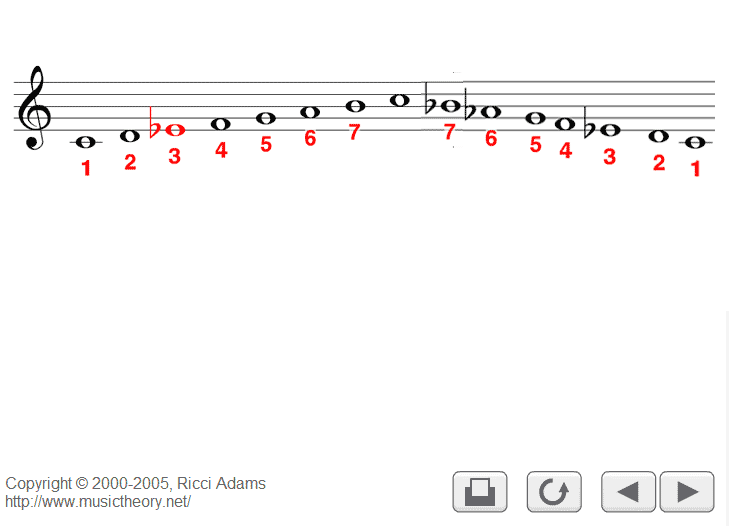While there is only one major scale, three different variations of the minor scale exist.

The first minor scale that will we discuss is natural minor. It is constructed with this formula.

Let's build an A Natural Minor Scale. Our starting note will be A.

From A, we take a whole step to B.

Next, we take a half step to C.

From C, a whole step takes us to D.

Another whole step takes us to E.

From E, we go up a half step to F.

From F, a whole step takes us to G.

Finally, the last whole step returns us to A.

A Natural Minor is: A, B, C, D, E, F, G, A.
Notice that the A Natural Minor Scale has no notes with accidentals.

Next, we will construct the C Natural Minor Scale. Our starting note will be C.

The whole step takes us to D. From D, a half step takes us to Eb.

The following whole step takes us to F.

From F, a whole step takes us to G. The half step from G takes us to Ab.

From Ab, we take a whole step to Bb.

The final whole step returns us to C.

C natural minor is: C, D, Eb, F, G, Ab, Bb.

Notice that the C Natural Minor Scale has three flats.

Next, we will discuss harmonic minor.

To convert any natural minor scale into harmonic minor, raise the seventh note by a half step.
Let's convert C Natural Minor into C Harmonic Minor.

Simply raise the seventh note (Bb) by a half step, resulting in B.

C harmonic minor is: C, D, Eb, F, G, Ab, B.

Finally, we will discuss melodic minor.

To convert a natural minor scale into melodic minor, raise both the sixth and seventh notes by a half step.

For example, to convert C Natural Minor into C Melodic Minor, simply raise the Ab and Bb a half step to A and B.

C melodic minor is: C, D, Eb, F, G, A, B.

Usually, melodic minor is used only when ascending. When descending, composers prefer to use the natural minor scale.





























